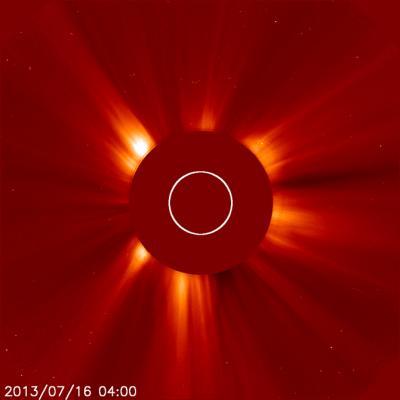On July 16th, 2013, at 12:09 a.m. EDT, the sun erupted with an Earth-directed coronal mass ejection, sending billions of tons of particles into space. These particles cannot travel through the atmosphere to harm humans on Earth, but they can affect electronic systems in satellites and on the ground. The particles will reach Earth over the next few days.
Experimental NASA research models, based on observations from NASA's Solar Terrestrial Relations Observatory, show that the CME left the sun at speeds of around 560 miles per second, a fairly typical speed.
Earth-directed CMEs can cause a space weather phenomenon called a geomagnetic storm, which occurs when they funnel energy into Earth's magnetic envelope, the magnetosphere, for an extended period of time. The CME's magnetic fields peel back the outermost layers of Earth's fields changing their very shape. Magnetic storms can degrade communication signals and cause unexpected electrical surges in power grids. They also can cause aurora.
Storms are less frequent during solar minimum, but as the sun's activity ramps up every 11 years toward solar maximum – currently expected in late 2013 -- large storms occur more frequently.

The European Space Agency/NASA Solar and Heliospheric Observatory captured this image of a coronal mass ejection as it left the sun in the direction of Earth and Mercury on July 16, 2013, at 4:24 a.m. EDT. Photo Credit: ESA & NASA/SOHO
The CME may also pass by the Messenger and Juno spacecraft and their mission operators have been notified. If warranted, operators can put spacecraft into safe mode to protect the instruments from the solar material.
In the past, geomagnetic storms caused by CMEs of this strength have been mild.





Comments